
When choosing ustensiles de cuisine en acier inoxydable, there are many factors to consider, including the quality, design, durability, heating performance, and usage of the stainless steel. Here are some key points to look for when choosing stainless steel cookware:
Stainless Steel Grade
The quality and performance of stainless steel cookware depends largely on the grade it is made of. There are several common grades of stainless steel, each suitable for different cooking needs.
Acier inoxydable 304
304 stainless steel is one of the most common high-quality stainless steels. 304 stainless steel has very high corrosion resistance and is particularly suitable for high humidity environments and long-term use. Therefore, 304 stainless steel cookware is very suitable for cooking methods that require long-term heating, such as boiling soup, stewing, and stir-frying.
Caractéristiques:
1.High corrosion resistance, particularly suitable for long-term use.
2.Non-reactive, keeping the original flavor of food.
3.High temperature resistance, suitable for various cooking methods.
316 Stainless Steel
316 stainless steel has higher corrosion resistance than 304 stainless steel, particularly in sea water and acidic environments. Therefore, the application fields of 316 stainless steel cookware are more required for high corrosion resistance or extreme cooking environments, such as seafood cooking. The content of Mo in 316 stainless steel is intended to further improve its resistance to salt and acid.
Caractéristiques:
1.Extremely corrosion resistant, especially suitable for seafood cooking.
2.Suitable for high-end cookware and professional kitchens.
3.Higher price, but more durable.
430 Stainless Steel
430 stainless steel is a magnetic stainless steel that is often used to make entry-level stainless steel cookware. Although it is not as corrosion-resistant as 304 and 316, it is often used in some price-sensitive kitchen utensils due to its lower cost. 430 stainless steel cookware is generally used for simple cooking tasks such as oven baking and stir-frying.
Caractéristiques:
1. Affordable price, suitable for consumers with limited budget.
2. Poor durability, especially prone to damage in high temperature and humid environment for a long time.
3. Suitable for daily light use, not suitable for high-demand cooking occasions.
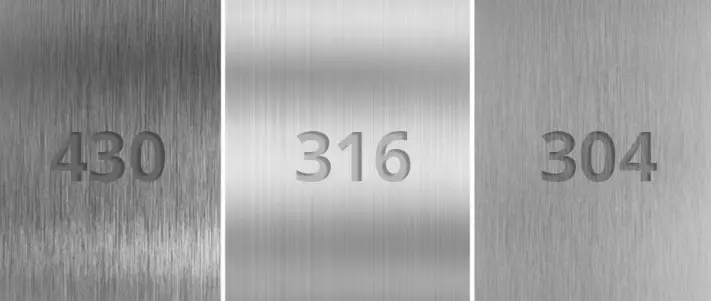
Number of Layers of Cookware Material
Stainless steel cookware usually adopts a multi-layer design to enhance thermal conductivity. Common designs include:
- Single-layer stainless steel: This type of pot is usually cheaper, but has poor heat conductivity and may heat unevenly.
- Three-layer structure (sandwich stainless steel): The most common design, usually composed of stainless steel, aluminum or copper, with the aluminum or copper layer located between two layers of stainless steel. It can provide better heat conductivity and ensure that food is heated evenly.
- Five-layer or seven-layer structure: This design provides better heat conductivity and is suitable for cooking methods that require precise temperature control, such as stir-frying, stewing, etc.
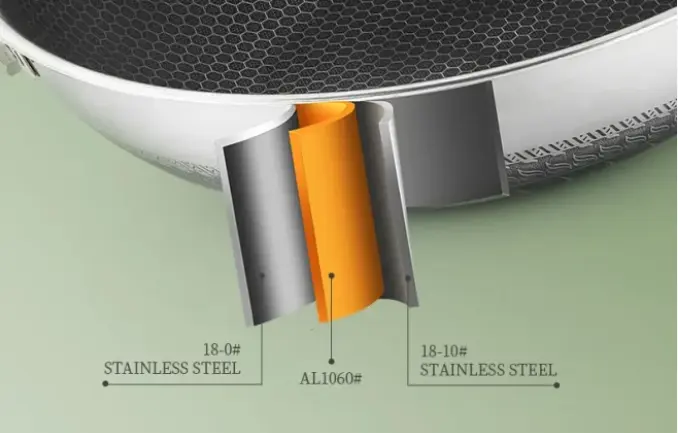
Bottom Structure
The bottom structure of stainless steel cookware is very important for heat distribution:
Frying pan: Suitable for most stoves, especially induction cookers (requires a magnetic bottom).
Multi-layer bottom: This design helps to heat evenly and prevents local overheating of the bottom of the pot. The multi-layer bottom can increase the strength and thermal conductivity of the pot.
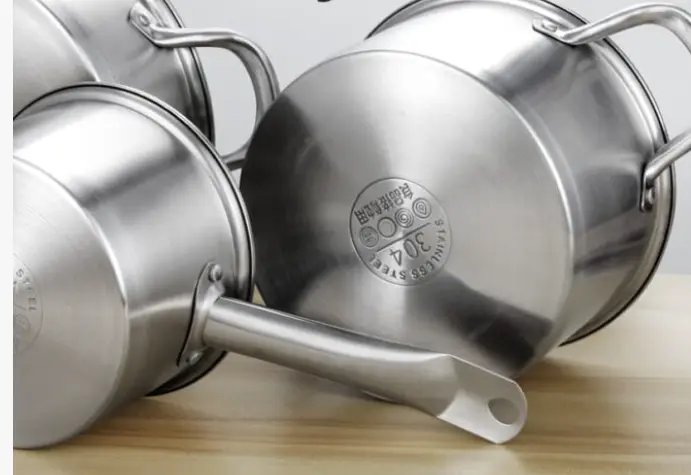
Handle Design
The handle design of stainless steel pots is also a factor to consider when choosing:
Insulated handle: Most high-quality stainless steel pots have an insulated design. The handle is usually cast aluminum, plastic wrapped or designed to be resistant to high temperatures to prevent overheating.
Durability: Check whether the handle is firm to avoid loosening or breaking during use.
Is it suitable for oven use: Some stainless steel pots have handles designed to withstand high temperatures and are suitable for oven roasting or grilling.
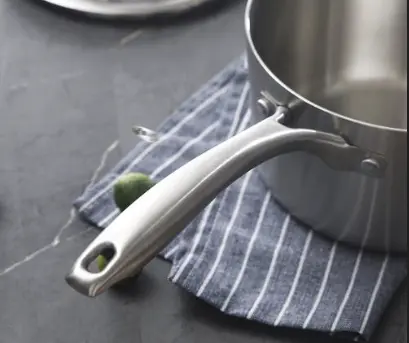
Thickness of the Pot
Thick-bottomed pan: Thick-bottomed stainless steel pans can better retain and disperse heat, avoiding local overheating. Thicker bottoms are usually suitable for slow cooking and long-term heating.
Thin-bottomed pans: Suitable for quick stir-frying, frying and other cooking methods that require quick heating.
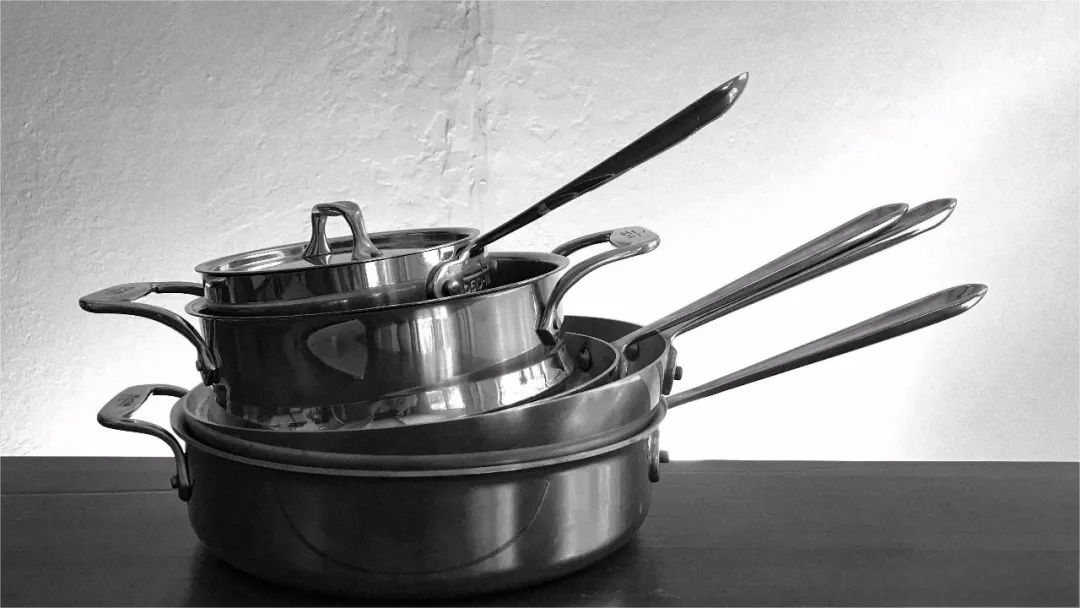
Is It Suitable for Induction Cooker?
It is important to know whether stainless steel cookware is suitable for induction cookers, as induction cookers can only react with magnetic materials to generate heat. Most stainless steel cookware will have a note on the bottom indicating whether it is suitable for induction cookers.
Magnetic bottom: Make sure the bottom of the pot is magnetic and suitable for induction cooker use. Usually a magnetic stainless steel bottom design is used.
Check the bottom logo: Check if there is an induction cooker-suitable logo on the bottom of the pot to ensure compatibility.
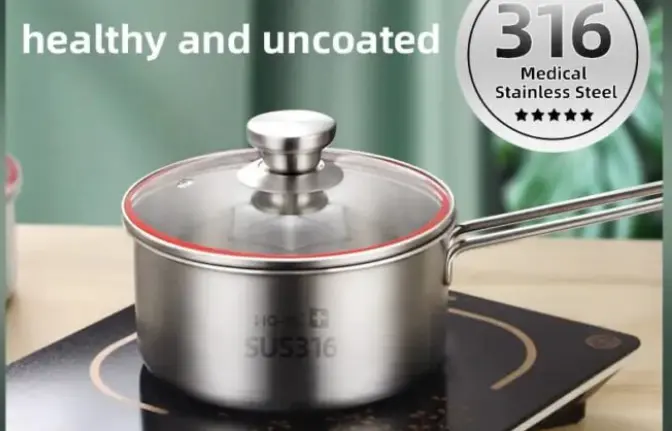
Cleaning and Maintenance
Stainless steel cookware is very durable and easy to clean, but the following should be kept in mind when buying:
Surface treatment: The polished stainless steel surface is more beautiful and easy to clean. It is not easy to have food residue left in pans with a smooth surface.
Seamless design: Some high-end stainless steel cookware is designed to be seamless, thereby reducing gaps that may further lead to bacterial growth.
Not easy to clean: Generally, stainless steel cookware is easy to clean, but if the surface is scratched, oil or food residue may accumulate. You will need to ensure its quality and durability upon purchase.
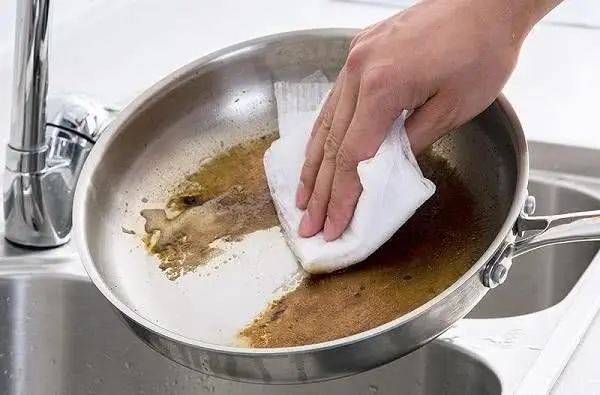
Brand and Price
Brand: It is better to use brand-name ones because big names usually undertake quality assurance much better.
Price: The price of stainless steel cookware varies greatly, so you should choose it according to your budget. If the budget is limited, you can choose brands and products with high cost performance. If the budget is sufficient, you can choose multi-layer structure, professional-grade stainless steel cookware.
Résumé
When choosing stainless steel cookware, you should make a comprehensive assessment based on your cooking needs, budget, and expected lifespan. By paying attention to the key points above, you can choose cookware that is both durable and efficient, improving your cooking results and kitchen experience.
À propos de Hengguang
Hengguang est un professionnel fabricant d'ustensiles de cuisine en acier inoxydable. The major product lineup includes: batterie de cuisine en acier inoxydable triplé, stew pot, wok, steamer, etc. With over 30 years of production experience, focusing on using superior 304, 316, and other quality stainless steel material for each product with superior resistance to corrosion, resistance at high temperatures, and super heat conductivity.
We also provide custom-made cookware services: custom-made cookware in materials, size, function, coating, and shape. We design and manufacture cookware that meets your needs according to your special requirements to ensure that each product meets your expectations.
